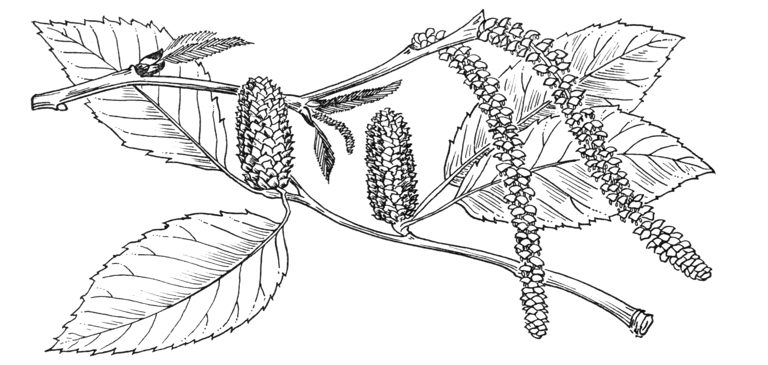A tree up to 70 or 80 ft high in a wild state; the bark of the trunk not peeling, dark, almost black; branchlets silky hairy when very young, soon becoming glabrous and shining brown. Leaves ovate or ovate-oblong, mostly heart-shaped at the base, pointed, 21⁄2 to 6 in. long, 11⁄2 to 31⁄2 in. wide, toothed (often doubly so), dark glossy green and ultimately glabrous above, paler green and silky-hairy on the midrib and veins beneath; veins in ten to thirteen pairs; leaf-stalk 1⁄4 to 1 in. long, hairy. Male catkins 2 to 3 in. long. Fruiting catkins 1 in. or rather more long, 1⁄2 in. in diameter, scarcely stalked; scales not downy, the lateral lobes rather wider than the middle one.
Native of eastern N. America, where it yields a valuable timber; introduced in 1759, according to Aiton. When bruised, the young bark has a sweet, aromatic taste and smell, and by distillation yields an aromatic oil. This birch is allied to B. lutea, but differs in the darker bark of the trunk, the sweeter-tasting young bark, and especially by the glabrous scales of the fruit catkin. In my experience it is not so well-doing a tree as B. lutea in this country.
It is not common in cultivation in the British Isles, but there are specimens 45 to 50 ft high at Tortworth, Glos.; Dawyck, Peebl.; and Mount Usher, Co. Wicklow, Eire.


